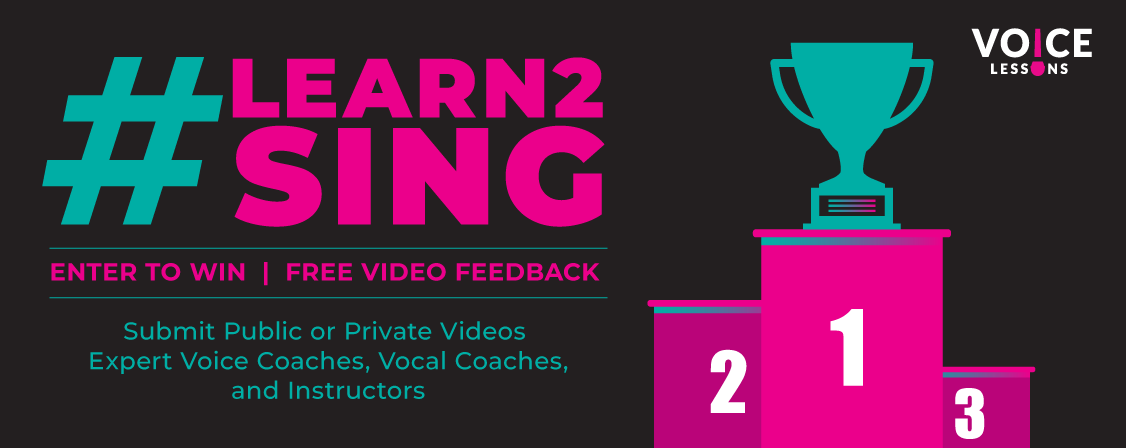
Singing Lessons – Building Body Basics
Establishing a basic understanding of singing may seem easy, but actually accomplishing it can feel more foreign than learning a new language! Learning to sing involves hearing the right things, using parts of the body that you need to be a doctor to find and then emitting sounds that might seem like you need to have the muscle control of an Olympic gymnast. Overwhelming? Don’t be discouraged! Singing lessons and becoming educated about how singing works are the path to becoming a better singer. The teacher can take you through the steps in easy-to-manage stages, too. Good voice lessons and smart voice teachers help neophyte singers build the basics of understanding vocal production anatomy designed for singing success.
- Can Everyone Sing?
The answer is a resounding, “Yes!” Unless, of course, you are looking for an excuse to get out of Friday night open mic nights with your co-workers – we’re not going to judge! We’re here to help those wanting help and who are serious about learning. Seriously, everyone can sing! Vocal experts agree. If a person can speak, they can learn to sing. This doesn’t mean you’ll hit notes with Frank Sinatra’s suave demeanor, but learning to hold notes and move through progressions of scales and through songs is entirely possible.
- Be easy on yourself.
It’s self-judgment that is the real problem for anyone new to studying voice and developing their vocal chops. But it’s actually kind of normal if you think of it this way: How many people do you know who love how their voice sounds on their voicemail? The reality is that most people hate the sound of their own voice and want to learn to sound like their favorite star. Which is what sets people up for disappointment. When you hear your favorite stars you are listening to the results of years of practice and experience as well as thousands of dollars spent behind the scenes on producing a perfect sound. You can’t copy that TODAY! But you can start on a really fun journey of learning and progress. Voices are unique and special and a good voice teacher will help you find your sound – and that is way more fun than just imitating others.
- Determine realistic expectations.
For those who have the goal of learning to sing with your own voice and sound, singing lessons are key. If the goal is to mimic the amazing vocal abilities of Whitney Houston, the results will probably be disappointing. Just like coaching cannot make us all Babe Ruth batters, not everyone has the natural abilities of some of the greatest singers. But if expectations are adjusted to more realistic standards, finding your own voice is absolutely possible.
- Singing Physiology: Where are all the parts that make the sounds?
Every singer, just like every athlete, needs to start with solid fundamentals. Fundamentals start with the physiology involved in singing. Building singing basics means building your singing body. This doesn’t mean you need to spend hours in the gym every day. It means you need to understand the parts of your body that create sound and how those parts need to work when you’re singing.
- Everyone says to sing from my diaphragm.
We’ll start with the diaphragm since it gets the most publicity — yep, the diaphragm is often considered the Taylor Swift of your singing physiology. The diaphragm is a muscle located just below the lungs and above the navel. It is the key muscle for respiration, pulling air into and expelling it from your lungs in an unconscious rhythm.
- TRUE OR FALSE: The diaphragm can be controlled by the singer.
False. But, don’t let that deflate your diaphragm because you still need it. The truth is that somewhere in the history of vocal instruction a myth has been propagated: We feel compelled to set the record straight. The diaphragm functions as part of the autonomic nervous system – it works automatically and can’t be controlled like you can control your hand or eyes. Without going into a full-blown anatomy lesson, here is the basic flow for sound production: Sounds are created when air is pushed up from the lungs, through the trachea, into the larynx and across the vocal folds. After that, as vibrating sound, it travels into the pharynx, up past the soft palate and out through the mouth. The larynx is also called the voice box. Sound occurs as the vocal folds open and close because the cords are vibrating. The sound changes based on how taut the cords are and how much pressure is exerted on them. This is why you need breath support or, as we like to call it, Breath Management. And that’s where the diaphragm comes in but instead of trying to control the diaphragm, it is more correct to think of breathing low in the body.
- First learn to control airflow.
This isn’t accomplished by trying to control the diaphragm. Instead, learn deep belly breathing techniques. Stand tall and take a deep breath. Control the breath in and then slowly exhale. Repeat this to develop muscle control just like you would perform a bicep curl; slowly and smoothly to build muscle control. When you are doing this well, your diaphragm is a big part of the process but please notice: you aren’t controlling the diaphragm. You are instead thinking of breathing in a certain way and then the diaphragm does its thing to accommodate your wishes!
- Next make vibrations happen
Now that you can push air up through your body with control, it is time to put your vocal folds in the way of the airstream so that they vibrate. Vocal cords vibrate when air flows across them and they change and adjust as you ask for different types of sounds. So, really you don’t “control” these muscles either! What?
- Strengthen all the muscles in the larynx and neck
There are many small and large muscles in your neck and in your larynx that help you sing well. The bigger, extrinsic muscles control the position of the larynx and neck posture. The smaller, intrinsic muscles control the folds. And you can’t “develop” them by doing squats or pushups. Instead, you do vocal exercises to help train these muscles. One example is the glottal stop warm-up: This is an anatomical name for an action you do each and every time you cough. Take a breath, push the air out from the belly and then close the throat. Release the air in 5 small bursts that might sound like VERY gentle throat-clearing (You don’t need to actually cough in the exercise). Release and repeat. Keep in mind that any type of exercise done for extended periods leads to fatigue. Listen to your body when it tells you that it is becoming tired.
- Voice teachers can help.
A voice teacher is the best person to work with you as you build the basic skills of muscle control like in that glottal stop exercise. Once you master a basic skill, your teacher will notch up the difficulty with other exercises. Then when that is successful and easy, here comes another complication for you to master. This is how you make progress. Like what if you want to increase your range? If you are consistently hitting a specific limit in range during your vocal exercise practice, your singing teacher will work with you to understand why that is happening and create exercises to teach you another approach. Learning to recognize and then repeat new techniques develops skills. Body mastery leads to vocal mastery where you can experience singing success.
- Can You Get Better at Singing with Practice?
If you take a music lesson from a voice teacher, you will learn something whether you are a beginner or a pro. You might take a series of 10 lessons, each of them filled with new ideas and concepts. If you don’t practice after your lesson, your progress will be slow, at best. Regular music lessons with a singing teacher AND regular practice is the best way to improve as a singer. Any new singing technique needs to be practiced in, just like a tennis stroke needs to be practiced. Practicing vocal exercises in between lessons not only reinforces the teaching, but also develops inner confidence as you build new skills.
- Act like a pro when learning to sing.
And I don’t mean that you should head out to audition for the next American Idol copycat talent show. What I do mean is that if you really want to learn to sing, you need to make a commitment to voice practice – like a professional would. Schedule your singing lessons as time and financial resources allow. Most people can’t afford daily singing lessons so you’ll need to establish practice sessions daily. Incorporate online voice lesson tools and set a time every day to practice.
- Keep practicing!
Devote time, even if it is just five minutes, to warming up with stretches and breathing exercises. Maintain good posture and try to practice when you will be uninterrupted. Of course, voice teachers would love for you to practice for a full 30 minutes or longer. But if you can only practice properly for five to 10 minutes, it’s better to practice properly for a shorter time than to practice tired for extended periods of time.
- How Long Does It Take to Learn How to Sing?
This might not be what you want to hear, but we’ll say it anyway: how long does it take to learn to sing is the wrong question. Anyone can learn the basics of singing in a lesson or two. The
- The answer is a bit complicated.
After all, everyone starts with a different level of skill, genetic gifts and disposition for practice discipline. The reality is that mastering singing is a life-long endeavor that even professional singers continually work at. It is completely understandable to want to quantify this, though, as it takes time and costs money to pay for voice lessons. Having reasonable expectations for your growth and your teacher’s ability to convey ideas to you is important. The best way to approach how long it will take to learn to sing is to meet with a voice teacher and discuss your baseline starting point.
- Set short term goals.
Go over your goals with your voice teacher and then establish realistic time frames for growth. Break down more comprehensive goals into smaller goals that are easier to reach. For example, your end goal might be to perform a popular pop song. There is nothing wrong with that goal, but break that down into smaller accomplishments with shorter time frames. You might start with “Twinkle, Twinkle, Little Star” in a three-week period. Perhaps there are tone, pitch or vocal power goals you want to meet as well. Not only does breaking the bigger goal down into smaller goals make progress easier to measure, it helps you build confidence in your growing abilities.
- Develop a plan.
Mark up a calendar with achievable goals. Commit to a regular practice schedule and then measure your success. The more commitment you have, the faster your learning curve will be in learning to sing.
- Working With Your Voice Teacher
The purpose of a teacher is to help you build basic skills and fine tune more advanced abilities in singing techniques. You will learn to sing faster and with better habits when you have proper vocal instruction just like a person new to tennis will improve faster with a good tennis coach.
- During Lessons:
Singing teachers are there to help you learn how to use your body to create sounds that match the tone, pitch and tempo of your favorite tunes. They also teach you how to warm up and cool down after a singing workout. These skills help you prevent vocal injury which would then remove you from being able to practice singing.
- Between Lessons:
When you aren’t working with your teacher during a private lesson, make sure you are practicing with intention and using resources that help you. Online lessons such as those found at VoiceLessons.com are designed to walk you through step-by-step practice routines. These are great supplements to working with a voice teacher or a way to develop your skills in a professional manner without trying to coordinate schedules and leaving the house.
about the author
Mike Elson Mike loves to sing and make magic happen with computers and music. After trying lots of ways that didn't work to find... Read More

RECENT ARTICLES
RECENT IN KNOWLEDGE
Recent Topics
- Beginning Voice Lessons (1)
- Breathing Techniques (1)
- Confidence (1)
- Experienced Teacher (1)
- Kids Singing Lessons (1)
- Musical Career (1)
- Practice (1)
- Private Lessons (1)
- Professional Singer (2)
- Sing (1)
- Singing Teachers (2)
- Style (1)
- Teach Online (1)
- Vocal Exercises (1)
- Vocal Health (1)
- Vocal Music (1)
- Vocal Pitch (3)
- Vocal Range (4)
- Voice Coach (1)
- Voice Exercises (2)
- Voice Training (4)
- Young Vocalist (1)
Categories
- Basic Skills (7)
- Beginners (8)
- Career (2)
- CCM (1)
- Contemporary Commercial Music (1)
- Crossing Over (1)
- Exercises (2)
- Online Lessons (3)
- Online Voice Lessons (1)
- Songs (2)
- Students (6)
- Tips (4)
- Vocal Coaches (1)
- Voice Teachers (2)
- Warmups (2)
Testimonials




















